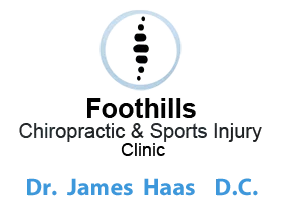Opioid Abuse and The Joint Commission
The medical community is finally taking some action to help curb the opioid epidemic. Dozens of healthcare organizations, consumer advocate groups and medical professionals sent a letter to The Joint Commission and the Center for Medicare and Medicaid Services. The letter asked that they remove questions about pain treatment from patient satisfaction surveys in hospitals. The patient satisfaction surveys are used to help determine reimbursements for hospitals. Some people have accused hospitals of over prescribing pain medications, including opioids, to get better patient satisfaction surveys that result in higher reimbursements. Patient advocacy groups claim that satisfaction surveys have pressured hospitals and physicians to prescribe more pain killers and this has fueled the opioid abuse epidemic.
In 1990, pain management experts started asking for more aggressive treatment of pain. They wanted pain to be "made visible" and as a result some organizations made pain the "fifth vital sign". Pain experts in the 1990s erroneously claimed that doctors were undertreating pain. There was an organized effort by pain management experts to convince doctors that opioids should be used for non-malignant pain. Some pain management experts and pharmaceutical representatives even claimed that OxyContin was not as addictive as many other pain medications.
The Joint Commission developed a manual of pain management standards. They also provided examples of how other organizations have successfully demonstrated compliance with the standards. The Joint Commission currently tries to claim that they don't bare a significant responsibility for the huge rise of opioid abuse because the standards were not "official " Joint Commission standards even though they were standards developed by The Joint Commission.
The Joint Commission originally required all accredited programs to assess pain in all patients. This include pain assessments for all patients in Hospitals, Behavioral Health Care and Nursing Care Centers. This requirement was eliminated in 1999 for all programs except Behavioral Health Care Accreditation. Despite removing of the requirement in 1999, may doctors, hospitals and nursing homes continued to follow the old guidelines. In 2009, the requirement to access patients for pain was removed from The Joint Commission's recommendations.
The Joint Commission recognized doctors of chiropractic as physicians in 1999. In 2015, the Joint Commission revised their pain management standards to include chiropractic for pain management. Prior to this, non-pharmacologic treatment approaches were not included in The Joint Commission standards. PC.01.02.07 is the Provision of Care, Treatment and Services Standard that addresses the assessment and treatment of pain. Current standards of care now state that physical modalities such as osteopathic manipulation, chiropractic therapy, massage therapy, physical therapy, relaxation therapy, cognitive behavioral therapy and acupuncture may be included as non-pharmacological pain strategies.
- https://www.jointcommission.org/topics/pain_management.aspx
- http://hwcdn.libsyn.com/p/6/8/6/68632032321a0312/Take_5_Pain.mp3?c_id=12203968&expiration=1507567025&hwt=9c4c04154528f14cf790348d9060beca
- http://jointcommission.new-media-release.com/2016_statement/index.html
- https://www.acatoday.org/News-Publications/ACA-News-Archive/ArtMID/5721/ArticleID/84/Chiropractic-Added-to-Joint-Commission-Standard-on-Pain-Management
- https://www.elementsbehavioralhealth.com/drug-abuse-addiction/makers-of-oxycontin-concealed-its-addictive-nature/
- https://whttps://www.jointcommission.org/assets/1/18/Clarification_of_the_Pain_Management__Standard.pdfww.beckersasc.com/asc-accreditation-and-patient-safety/the-joint-commission-s-pain-management-standards-5-key-notes.html
Greg L. Crawford D.C., D.A.B.C.O. Foothills Chiropractic, 1337 East Prospect Road, Fort Collins, Co 80525, 970) 493-2105, http://ftcollinschiropractor.com
